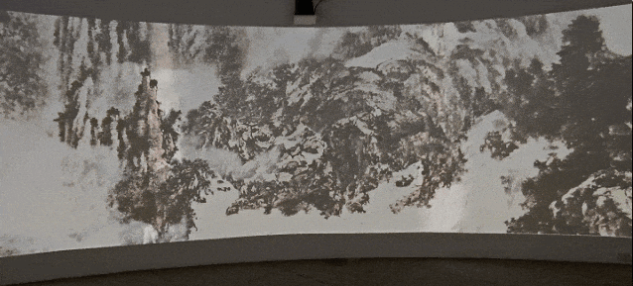Digitalization helps cultural relics protection and utilization
In recent years, digitalization has become a hot topic. In addition to creative videos and online exhibition halls, what else can digitalized cultural relics bring us? Hunan Province has taken a series of measures to implement cultural relic digitalization projects, opening up a new path for the protection and utilization of cultural relics.
Digital museum
Since the province implemented the cultural relics digitization project, Hunan Museum has accelerated the construction of existing digital projects and made a digital museum plan, hoping to break through the time and space limitations of offline visits relying on modern technology and create a 24-hour museum for visitors.

Now, Hunan Museum has 86 virtual exhibitions online and 43 panoramic digital exhibition halls (VR digital exhibitions) with a 360-degree screen, showcasing 5,857 exhibits and cultural relics.
In the offline exhibitions at Hunan Museum, various digital and intelligent devices have become the “portable tour guides” for visitors.
For example, the digital multimedia exhibition project has allowed visitors to get up close with collections in recent years.

This year, Hunan Museum will provide the public with a new digital program. The Art of Life: Multimedia Exhibition of Mawangdui Han Culture will reproduce the stunning cultural heritage of Mawangdui Han Tombs in a digital multimedia theater in June.
On the eve of summer vacation, the offline curated retail space of the digital Han life located on the 4th floor of Hunan Museum will officially open. Here, people can wear Han clothing, eat at a Han-style banquet, enjoy Han music, purchase Han gifts and use Han necessities to experience life in the Han Dynasty from multiple aspects.
In August, the “Digital Han Life” WeChat applet will be launched, allowing people to understand various knowledge of the Han Dynasty through different scenarios.
Cultural relics resource database
Wuxi Stele Forest of Yongzhou City beside the Xiangjiang River is the largest open-air stele forest in China. There are now 505 cubic meters of inscriptions on cliffs from the Tang to Qing dynasties, including famous carvings such as Yuan Jie and Yan Zhenqing’s “Ode to the Revival of the Tang Dynasty”. It has extremely high historical, literary and artistic value.
However, as time goes by, many stone carvings are hardly recognizable to the naked eye, and it’s difficult for scholars to study and even more difficult for the public to understand their value.

“With the help of technological means, people can understand the stone carvings.” Li Wuwang, digital project leader of Wuxi Stele Forest, presented a set of comparison images. After the stone carvings were collected and processed with scientific technology, the texts were clear and the beauty of calligraphy art was displayed.
“We need to collect lighting matrix data from eight directions for each stele, take hundreds of high-definition photos, and then calculate them through more than 20 steps by a computer to achieve high-precision digital imaging. Now, we have collected about 150 cubic meters of stone carvings, and we plan to complete collections of all stone carvings in June,” said Li Wuwang, adding that digital collection is only the first step. They hope to establish a full chain solution of digital collection, digital restoration, secondary innovation and development, promotion and display and industrial application.

The development path of the Wuxi Stele Forest digital project is also the development direction of the Hunan Cultural Relics Resource Database. Based on the cultural relics resources of Hunan Province, a dynamic data resource library of cultural relics that integrates data storage, management, analysis and display will be built. It aims to provide cultural relics data storage space and customized digital public display development space for cultural relics units, and offer data management and analysis services for cultural relics administrative departments throughout the province.

 Print
Print


